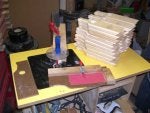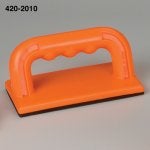Hello! Have had a good read of the forum topics trying to get an answer to my question, but still not quite sure.
Basically, I make small panels out of Sapele hardwood (about 15cm by 15cm) that are mostly triangular in shape, but with a 3/4 circle cut out on one side.
Problem is, I usually sand the edges by hand, and tbh its become a very laborious task, and isn't doing my wrists any good as I get older.
I've been looking into routers, using a 1/8th 'round over' bit with guide bearing, which it seems will give a good effect on both the flat & curved edges.
My question is, mainly due to saftey reasons because of the wood pieces quite small size, would I be better using a small hand router with 1/8th bit, or a table router using same bit with a perspex top guard. I'm guessing the table router would be more stable but am worried about the safety issue, with my fingers beng quite close to the blade.
Any advice would be greatly appreciated.
Thank you.
Basically, I make small panels out of Sapele hardwood (about 15cm by 15cm) that are mostly triangular in shape, but with a 3/4 circle cut out on one side.
Problem is, I usually sand the edges by hand, and tbh its become a very laborious task, and isn't doing my wrists any good as I get older.
I've been looking into routers, using a 1/8th 'round over' bit with guide bearing, which it seems will give a good effect on both the flat & curved edges.
My question is, mainly due to saftey reasons because of the wood pieces quite small size, would I be better using a small hand router with 1/8th bit, or a table router using same bit with a perspex top guard. I'm guessing the table router would be more stable but am worried about the safety issue, with my fingers beng quite close to the blade.
Any advice would be greatly appreciated.
Thank you.







